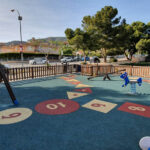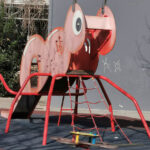
Busy parents may not have the opportunity to examine a mealtime etiquette book on correct table manners, (does anyone these days?) but mealtime manners for children are important. Table manners are a life skill that is required if you wish to eat out with your children as they grow up. Teaching them table etiquette begins by role modeling it beginning with infancy. By the time they reach kindergarten, children should have mastered eight basic table manners.
Here are the top manners your children should know while at the table:
Stay seated
It may seem insignificant, but sitting in a chair at the table is difficult for some children. It may take some practice to sit comfortably in a chair during a meal. What children don’t wiggle, and sway back and forth, or constantly want to get up? Reiterate that while you are eating, you stay seated. That is part of mealtime etiquette.
Utensils
Determine which foods necessitate the use of utensils. By kindergarten, children should grasp which items, such as grapes, may be eaten with their hands and which require a fork or spoon. As you eat a variety of foods, teach your child when it is okay to eat with their fingers and when to use their utensils. And have fun with it. Not everything needs to be done with a fork and knife all the time and vice versa. Let a child be a child, but pass the knowledge on to know when which scenario is okay.

Make use of a napkin
What parent doesn’t have a picture of their child covered in tomato sauce or ice cream? Children especially at a younger age love wiping it all on their sleeves. Teach them where and how to use napkins. Where to place them, for example, tuck it in like a bib in your shirt if your eating pasta.
Wait until everyone has been served before eating
Children benefit greatly from family dinners. Meals are designed to be enjoyed rather than rushed. Waiting to eat until everyone has been served is an example of good table manners. The family can then sit down to eat together and everyone is relaxed and in the moment, ready to enjoy a family meal.
Consume with ease
Eating hastily is bad for your digestion. As a result, encourage your children to take little pieces, chew, taste (and appreciate) their food. It is an experience. Sometimes you’re going to be in a rush, however, for the most part, teach them to enjoy their food. That doesn’t mean count 20 times with every bite or else you’ll all be sitting there for eternity, however it does mean to just enjoy it at their pace.
No “Sea(e)-food”
Don’t chat while you have food in your mouth. This is a table manner that you may struggle with over time, because children pick this up from adults as many adults converse while chewing food. Set the foundation early on and constantly remind yourself to do the same. No one likes to “sea” food 🙂
Be courteous
Being nice is a broad term that includes saying please and thank you during meals. Children should learn to express gratitude to both the person serving them and the person who prepared the meal. The same goes for eating out and when you are being served. Have them order their meal and be polite.
No interrupting
Mealtime is good for discussing what happened during the day, especially family dinner meals when everyone is typically together. However, what is important to teach here is that everyone, you and your children, should wait their turn to speak. This is another important life skill that helps children acquire table manners as well as listening abilities and you are the one modeling this to them.
Pardoning oneself
Being courteous and having decent table manners has never gone out of fashion. Even with all the craziness we see today through social media, meals aren’t as formal as they were a few decades ago, but table manners remain just as vital. If your child needs to get up and go to the bathroom or do something else, have them excuse themselves for a minute. It teaches respect towards others.
You see, setting a good foundation for your child’s mealtime etiquette by educating them before kindergarten is vital. Simple things that will go a long way and by teaching your child mealtime etiquette you’ll ingrain in them a crucial skill because it instills excellent manners and social skills while also preparing them to eat in a variety of social contexts. Good table manners can also make meals more enjoyable for both you and your child, as well as establish a great example for their future social behavior. Furthermore, teaching your child proper dining etiquette can boost their confidence and independence which is also crucial for developing their sense of responsibility.
While these are the basics when it comes to teaching your children, is there anything else you would add to this list? What are thoughts? Comment below.









